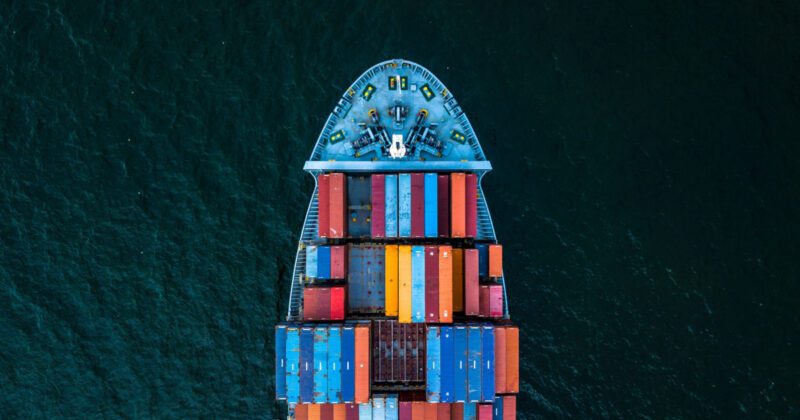进港运力给海运带来新挑战

在过去两年创下利润记录后,集装箱运输公司现在面临着新的挑战。随着未来两年将有更多船舶交付,面对需求放缓,它们将如何管理运力和费率?
由于全球通货膨胀削弱信心和产出,剩余的消费支出正在恢复到疫情前水平,同时支出从产品转向旅游和外出就餐等服务。
政治不稳定、生产成本上升—尤其是由于能源成本飙升—以及消费者信心和经济增长率下降,显然正在影响需求。需求降低,运力增长,导致了费率下降。
“随着市场费率的下降,在未来几个月为客户提供最佳解决方案以优化成本至关重要,”DHL全球货运亚太区首席执行官梁启元(Kelvin Leung)表示。
班轮挑战
今年年初,航运公司的集装箱新订单达到了创纪录水平。尽管到2023年才能投入使用,但此举目的是引入新运力,缓解过去一年里不断累积的费率压力。
然而,市场形势发生了变化,乌克兰战争、能源危机和通货膨胀等各种事件导致消费者支出减少,从而导致货物需求下降。
集装箱运输公司目前在供应侧面临潜在挑战,产能过剩可能会影响利润。根据航运分析公司Alphaliner的数据,预计到2025年底,共有730万20英尺当量单位(TEU)的新造船运力将投入市场,占现有蜂窝船队的28.3%。
该分析公司称:“仅2023年和2024年,就将有510万TEU的新造船吨位加入船队,预计明年将有230万TEU, 2024年将有280万TEU。”“相比之下,预计2022年集装箱船队的新运力将只有约110万TEU,与前一年大致相同。”
目前的船队平均船龄不到14年,因此报废可能会受到控制,尽管由于即将出台的国际海事组织(IMO)碳法规将迫使船舶减速以减少排放,一些运力将有效地退出市场。
所有这些都意味着,在需求停滞的2023年,大量新的大型集装箱船将下水。明年,船舶吨位供应可能再次超过船舶需求,班轮运输市场可能走向结构性产能过剩。
“毋庸置疑,我们正在迈向集装箱运输业的一个时期,期间运力过剩是承运商面临的主要挑战,”DHL全球货运全球主管Dominique von Orelli表示,“希望运输公司能够采取行动减少空位,并着眼于为客户提高服务的可靠性。”
新冠疫情导致中国供应链持续中断
尽管欧洲和美国的港口拥堵问题有所缓解,但中国的新冠疫情动态清零政策仍在实施,供应链中断仍在继续。中国共产党于10月结束了第20次全国代表大会,疫情导致的限制可能会大幅放开的希望破灭了。11月7日,在备受期待的国务院新闻发布会上,官员们重申,中国将继续坚持严格的政策,尽管该政策持续抑制国际贸易和中国自身经济增长。
“我们正在密切关注中国的情况,并希望在明年之前看到限制有所放宽。这样制造商才能更有效地计划生产和交付。这也将促进中国重要的国内市场的增长和增强信心,”Leung补充道。
经济展望
最新的10月采购经理人指数(PMI)调查显示,全球经济活动的低迷没有缓和的迹象。10月摩根大通全球综合产出指数从9月的49.6降至49.0,为2020年6月以来的最低水平。
摩根大通(J.P.Morgan)报告称,商业乐观指数降至28个月以来的最低点,因为“在经济、通胀和政治压力加剧的情况下,新订单数量和国际贸易流量继续减少”。
摩根大通全球经济学家Bennett Parrish补充称:“由于需求疲软,地缘政治和市场波动性高,通胀压力仍在上升,在今年剩余时间实现增长的前景依然黯淡。”
金融分析公司标普全球指出,除疫情管控外,欧元区经济下滑速度为2013年4月以来最快的一次,制造业和能源密集型行业的产出损失最大。德国报告的经济萎缩最严重,而法国的增长“只是停滞不前”。
标普全球市场情报首席商业经济学家Chris Williamson表示:“考虑到10月份产出损失加剧和需求状况恶化,欧元区经济似乎将在第四季度出现收缩,这加剧了人们对衰退似乎越来越不可避免的猜测。”
美国经济还面临制造业活动增速降至最低的困境。美国供应管理协会称,2022年10月美国制造业PMI从2022年9月的50.9降至50.2,均为2020年5月以来的最低水平。
费率转变
历来的旺季在2022年几乎没有出现,许多行业观察人士认为,这种下滑是结构性的,而非季节性的。这些经济逆风,加上新冠疫情的限制措施,给货运带来了沉重的下行压力。尽管各地不均衡,但这种压力是全球性的。
根据DHL 11月海运市场更新报告,许多贸易通道上的货运量正在减弱。最终结果呢?现货运价预计将恢复到疫情前水平。
仍然存在的问题是,近期是否有费率正常化的迹象。




 简体中文
简体中文